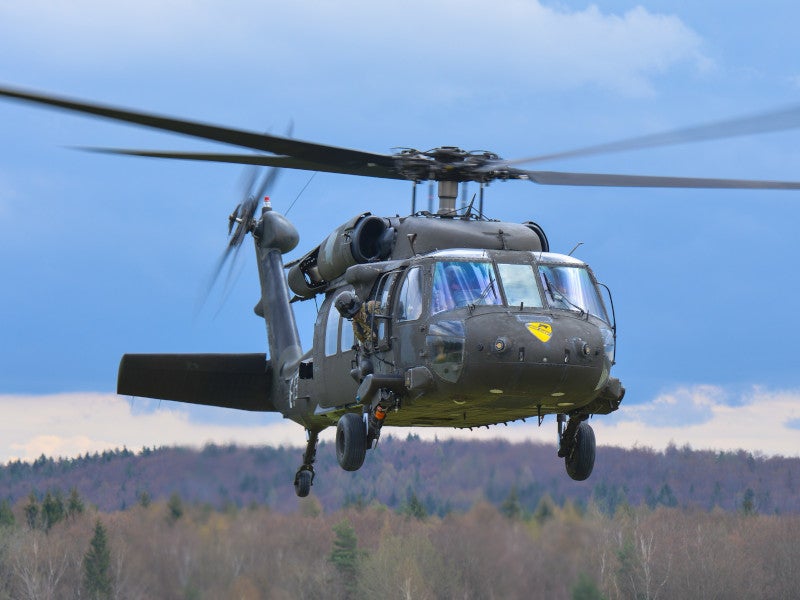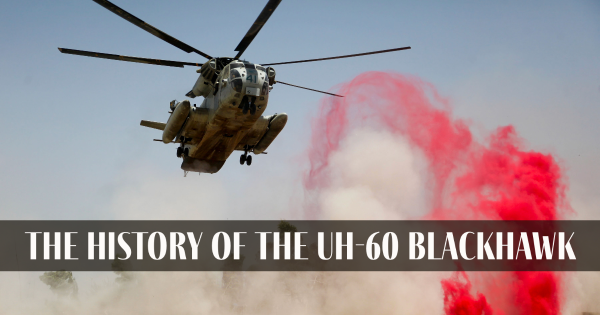Comprehending the Mechanics and Design Behind Uh 60 Helicopters
The UH-60 helicopter, frequently recognized as the Black Hawk, stands as a pinnacle of contemporary rotorcraft modern technology, embodying a mix of robust engineering and complex technicians. From its inception to its present models, the evolution of this aircraft showcases a combination of technology and practicality. As we peel back the layers of the UH-60's layout, a globe of intricate systems and precise engineering emerges. Recognizing the mechanics and engineering behind this versatile aircraft reveals a world where accuracy meets power, and where each component plays a vital duty in attaining trip.
History of UH-60 Helicopters
The history of UH-60 helicopters traces back to the late 1970s when the United States Military looked for a advanced and functional energy helicopter to replace its aging fleet. In response to this demand, the Sikorsky Aircraft Corporation created the UH-60 Black Hawk helicopter. Presented in 1979, the UH-60 rapidly became a staple in army procedures due to its impressive capacities.
The UH-60 was created to master a variety of missions, consisting of troop transportation, clinical evacuation, digital warfare, and special procedures. Its ability to adapt to various functions made it an important possession to the united state Military and various other military pressures around the globe
Over the years, the UH-60 system has undertaken a number of upgrades and variants to improve its efficiency and equal progressing mission needs. These helicopters have seen extensive solution in conflicts such as the Gulf Battle, Afghanistan, and Iraq, showcasing their reliability and adaptability in varied operational settings. The UH-60's rich background is a testament to its long-lasting legacy as a top utility helicopter.

Engine and Power Systems
Utilizing advanced propulsion modern technology, UH-60 helicopters are outfitted with innovative engine and power systems to ensure optimal efficiency and integrity in a variety of operational circumstances. The UH-60, commonly referred to as the Black Hawk, is powered by two General Electric T700-GE-701D engines, each efficient in delivering up to 1,940 shaft horse power. These turboshaft engines supply the needed thrust for the helicopter to accomplish its objectives successfully, including army transport, medical discharge, and battle support.

Blades System and Aerodynamics
How do the rotor system and aerodynamics of UH-60 helicopters add to their operational efficiency and flight capabilities? The rotor system of the UH-60 helicopter plays a vital duty in providing lift and propulsion. The UH-60 features a four-bladed, fully articulated rotor system that enables high maneuverability and stability during trip. This design enables the helicopter to perform a vast array of goals, from transport and medical evacuation to battle procedures.
Aerodynamics also play a vital duty in the efficiency of UH-60 helicopters. The streamlined body and blades blade layout lower drag, permitting the helicopter to attain higher rates and far better gas efficiency. The aerodynamic design of the UH-60 additionally adds to its ability to run in varied ecological problems, consisting of high elevations and hot temperature levels.
Avionics and Trip Control Solution

In its elaborate control with the rotor system and the rules of aerodynamics of UH-60 helicopters, the avionics and flight Discover More Here control systems create a vital network of innovations forming the aircraft's functional capabilities. Avionics include the digital systems utilized for interaction, navigation, and checking different airplane features. In the UH-60, these systems include electronic display screens, communication radios, general practitioner navigating, weather radar, and auto-pilot systems. These avionics systems provide important details to the pilots, enhancing situational understanding and ensuring efficient and secure operation of the helicopter.
The page trip control systems of the UH-60 are accountable for translating the pilot's inputs into the suitable changes to the blades system, ensuring stable flight and maneuverability. These systems consist of hydraulic actuators, servos, and computers that collaborate to regulate the major and tail blades, along with other flight control surfaces. By precisely handling the helicopter's flight characteristics, these systems make it possible for pilots to perform a variety of missions, from transport and search-and-rescue to fight procedures, with accuracy and confidence.
Role and Applications in Air Travel
Avionics systems in UH-60 helicopters include a range of electronic systems that help in navigation, interaction, monitoring, and managing numerous aircraft functions. These systems consist of digital screens, autopilot systems, interaction radios, General practitioner navigation devices, and climate radar. Furthermore, these systems include safety functions such as auto-pilot modes, surface awareness advising systems, and security augmentation systems to enhance the total security and functional capacities of the UH-60 helicopters in different goals, including army transportation, clinical evacuation, search and rescue, and airborne firefighting.
Verdict
In conclusion, the UH-60 helicopter is a flexible airplane with a rich history and advanced design. Its engine and power systems, blades system, aerodynamics, avionics, and trip control systems all work with each other to make it a efficient and dependable equipment.
In its elaborate coordination with the rotor system and the rules of aerodynamics of UH-60 helicopters, the avionics and trip control systems form a critical network of technologies shaping the airplane's operational abilities.The trip control systems of the UH-60 are accountable for translating the pilot's inputs into the suitable modifications to the rotor system, guaranteeing here stable flight and ability to move. Avionics systems in UH-60 helicopters incorporate a variety of electronic systems that help in navigating, communication, surveillance, and regulating different aircraft features. Furthermore, these systems incorporate security features such as auto-pilot settings, terrain recognition alerting systems, and stability enhancement systems to enhance the total security and operational capacities of the UH-60 helicopters in different missions, consisting of troop transportation, medical evacuation, search and rescue, and airborne firefighting.
Its engine and power systems, blades system, the rules of aerodynamics, avionics, and flight control systems all function together to make it a reputable and efficient machine.
Comments on “Security First: Vital Action In UH 60 Helicopter Maintenance”